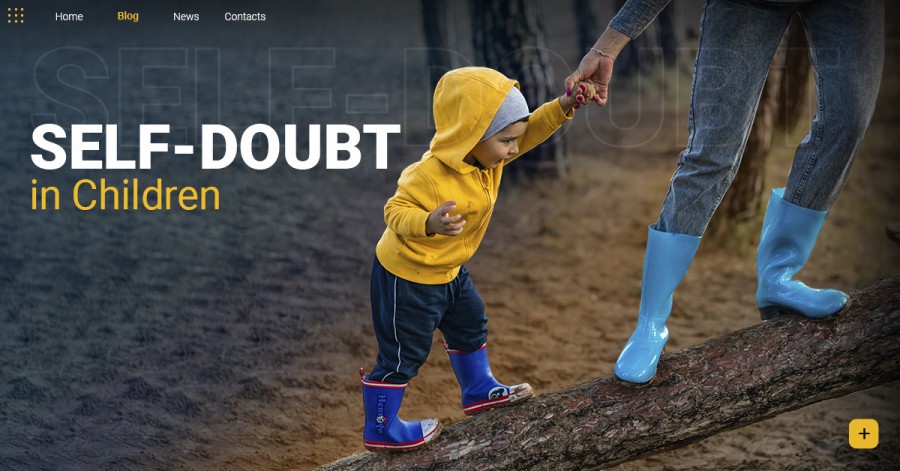Self-Doubt in Children
Published 15 January 2020 at 20:58
Tickikids Blog Hong Kong > digest > Self-Doubt in Children

“Everyone is always getting better grades than me in class. I never do anything better than others.”
“She is so much better than me in everything. I don’t think she considers me to be her friend. She is just being nice to me.”
“I think people talk behind my back. I think they don’t like me. I don’t have any friends in school.”
The above statements are all from real life, expressed by my teen clients during coaching sessions. There is a common thread that binds them all. Each statement is negative, disempowering, based on the opinion of themselves. One can sense the underlying theme of “I am not good enough and I don’t think I can do anything about it.” This feeling of “not good enough” is the root cause of unhappiness and frustration. It leads us to believe we are unimportant and worthless. This, in turn, holds us back from truly attaining our highest potential.
One needs to be especially cautious of this feeling of self-doubt lingering in teenagers. It is normal to have self-doubts sometimes when they view themselves as different from others and see how others perceive them. However, if it continues unattended for a very long time, it can be an impediment to their progress. It impedes their healthy risk-taking abilities; hampers problem-solving capabilities and holds them back from trying new things. This, in turn, can lower their productivity in school and affects relationships in the long run.
In this article, I enlist and elaborate two ways you can move your child from negative self-talk to positive actions in the areas they feel less confident in. Each of these methods has been tried and tested by my clients for beneficial results.

Photo Credit: Min An from Pexels
The Story
Whether we are adults or teenagers, we tend to bring in stories from our past experiences. These stories along with the emotions associated with them, tend to influence and interfere with the decisions we make in the present which have long term consequences.
Our thoughts and reactions to a given situation or a person do not arise out of anywhere. They have been installed in our mindset through years of conditioning. Parts of it could have been downloaded from hearing other people’s stories on the related situation. Mostly these are the people that have some influence over us.
Part of them could have been added based on our experience of a similar situation. Sometimes a circumstance in the past around a situation creates our impression about a certain thing/person/place.
To check if a story from the past is affecting your child’s decision in the present, ask them to check the following:
The things you are telling yourself, are they a fact or an opinion? A fact is an undeniable truth which is true any time. But opinion can change with time, person and situation. A question to make them ponder over the validity of the thought is: What if these thoughts weren’t true?
If the thoughts in their minds are based on their experience from the past, a good question to ask them is: Does this thought serve me or help me in the current situation or my current goal?
These stories can sometimes have a very strong grip on us which makes it difficult for us to look at it from a different angle. In those times, it is advisable to get them to seek the counsel of a neutral 3rd party and check what is their perception of the situation. A neutral 3rd party would not have given a biased perception because they do not have any vested interest there. Having this kind of perspective on the same situation can help in turning around thinking.

Photo Credit: shutterstock.com
The Magic Wand
When things are not going your way, it is an indication that the situation needs some deep thinking and reflection. And this reflection can start with, what do I want. In my experience, most of the times children are aware of what we DON’T want but are seldom crystal clear of what they want.
The Magic Wand is a great way to visualize what one wants and move backward from there. It works particularly well with children and teenagers.
Imagine you have found a magic wand. This magic wand will grant your wishes if you can clearly state what you want.
Now the fun part begins. Explore with your child, what would they wish from the wand. When they have stated their wish, explore with them from different angles what can happen if the wish is granted. Like what would it look like? What would be happening? Who would be there? How would they be feeling? What would they be thinking? What else would they want to be there to make it more perfect for them?
With each iteration, they will gain more clarity on what they want.
.jpg)
Photo Credit: Fizkes
Conclusion:
After Michelangelo created the now famous statue David, he said “I saw David in the block of marble lying in the overgrown bushes, right from the time I laid my eyes on it. After that my sole role was to chisel out everything that was not David”
It doesn’t matter where we are coming from, what matters is where we want to go. And for that, we need to have a very clear vision and action plan and cut out the rest of the clutter which mostly exists in our mind as our thoughts. Our thoughts become our actions, our actions become our behaviour and our behaviour becomes our character.
With children and teenagers, the sooner we become aware of their self-limiting thinking patterns, the sooner we parents should try to bring them out of this. Teenage is a time for them to explore the unlimited opportunities waiting to be explored by them. But they cannot make use of these if they are holding themselves back. It is our responsibility as adults to help them to guide and carve out the future they envision for themselves. Each with their strengths, attributes, and talents, waiting to be unearthed and used to unleash their immense potential.
By Shalini Bindal
About the Author:
Shalini Bindal is a Professional Coach certified by International Coach Federation (ICF). She focuses her coaching efforts on Teens, Parents and Women. Her one-on-one Cut-the-Clutter programme is designed to change the child’s thinking from negative to positive. Before becoming a Coach, she was a Human Resources professional and Corporate Facilitator. A mother of two teenagers, Shalini has lived in India, Belgium and now in Hong Kong. Email her for a 30-minute free in-person or virtual session shalini@kaleidoscope-workshops.com